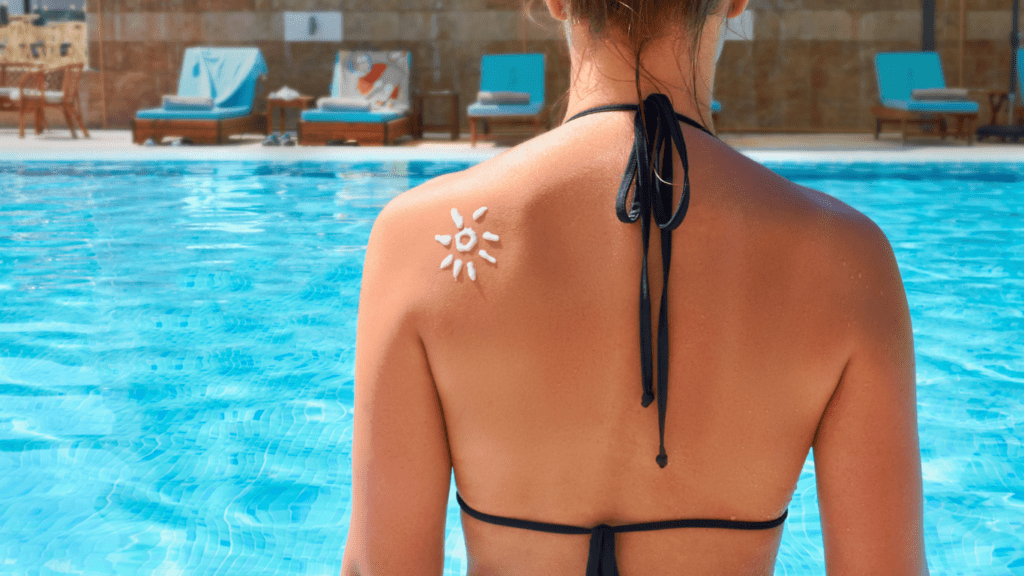Understanding UV Radiation and Its Effects
Comprehending UV radiation is crucial for effective sun protection. It damages the skin and accelerates aging, impacting long-term skin health.
Types of UV Rays
UV radiation comprises three types: UVA, UVB, and UVC.
- UVA Rays: These rays penetrate deeply into the skin, causing premature aging. They contribute to wrinkles and age spots. UVA rays are present throughout the year and can penetrate glass.
- UVB Rays: UVB rays affect the skin’s outer layers, leading to sunburns. They play a significant role in developing skin cancers. These rays are strongest between 10 AM and 4 PM, especially in spring and summer.
- UVC Rays: Generally absorbed by the Earth’s atmosphere, these rays rarely reach the skin. They’re not a significant concern for everyday sun exposure.
Long-Term Effects on Skin Health
Prolonged exposure to UV radiation results in several long-term skin issues:
- Skin Cancer: Both UVA and UVB rays increase the risk of skin cancer, including melanoma, basal cell carcinoma, and squamous cell carcinoma. Regular sunburns raise this risk significantly.
- Photoaging: Continuous exposure to UVA rays results in photoaging. This condition involves pigmentation changes, loss of skin elasticity, and deep wrinkles.
- Immune Suppression: UV radiation can suppress local immune responses, diminishing the skin’s ability to fight off infections and certain diseases.
- Eye Damage: Extended exposure causes cataracts and other eye problems. It’s important to protect eyes with UV-blocking sunglasses.
Understanding these impacts helps in making informed decisions about sun exposure and protection. Protecting the skin today prevents future complications and maintains a youthful appearance.
Essential Sun Protection Tips
Protecting skin from UV radiation is crucial. Follow these guidance points to minimize the harm caused by sun exposure.
Choosing the Right Sunscreen
Select a broad-spectrum sunscreen to protect against UVA and UVB rays. An SPF 30 or higher offers adequate coverage.
Look for water-resistant formulas if swimming or sweating. Some effective ingredients include zinc oxide, titanium dioxide, and avobenzone. Ensure the product suits your skin type (e.g., oily, dry) to avoid irritation.
Importance of Reapplication
Reapply sunscreen every two hours, especially after swimming or sweating. Even water-resistant sunscreens need reapplication. Use at least one ounce (a shot glass size) each time.
If outdoors for long periods, set reminders to keep your skin protected.
Wearing Protective Clothing
Wear clothing with an ultraviolet protection factor (UPF) when outdoors. Long-sleeved shirts, pants, and wide-brimmed hats offer additional coverage. Sunglasses with 100% UV protection shield your eyes from damage.Choose tightly woven fabrics to block more UV rays.
Additional Sun Safety Measures

Maintaining healthy skin requires more than sunscreen. Below are extra measures ensuring comprehensive protection.
Seeking Shade During Peak Hours
Avoid direct sunlight during peak hours, typically between 10 AM and 4 PM. Seek shade under trees, umbrellas, or overhangs if outdoors during these times.
UV rays are strongest and harmful during these hours.
Sunglasses and Sun Hats
Wear sunglasses with 100% UV protection to shield the eyes and reduce the risk of cataracts. Opt for wraparound styles for full coverage. Pair sunglasses with a broad-brimmed sun hat for additional protection.
A hat with a brim of at least 3 inches can protect the face, neck, and ears effectively.
Sun Protection for Different Skin Types
Different skin types need tailored sun protection strategies to effectively shield against harmful UV rays.
Tips for Sensitive Skin
Sensitive skin requires extra care to avoid irritation from sun protection products. Use sunscreen formulations labeled “for sensitive skin” or “hypoallergenic” to minimize potential reactions.
Opt for mineral sunscreens containing zinc oxide or titanium dioxide, as they are gentler compared to chemical sunscreens. Ensure the product is fragrance-free to reduce irritation risk.
Apply sunscreen generously to all exposed areas, reapplying every two hours. Pair with physical barriers like wide-brimmed hats and UPF-rated clothing for added protection.
Adjusting Care for Darker Skin Tones
Darker skin tones provide some natural UV protection but still need sun care. Choose a sunscreen with at least SPF 30 that won’t leave a white cast.
Look for formulations with added moisturizing ingredients like hyaluronic acid or glycerin to maintain skin hydration. Antioxidants such as vitamin C can help prevent hyperpigmentation.
Apply sunscreen daily and reapply every two hours, especially after swimming or sweating. Incorporate protective measures like hats and UV-blocking sunglasses.
Sun Protection Throughout the Year
Sun protection is necessary year-round, not just during summer. UV rays can harm skin regardless of the season or weather conditions.
Winter Sun Exposure
Winter sun exposure can be more intense due to the reflective properties of snow and ice. Even though the air may feel cool, the sun’s rays can still cause significant damage.
Protecting skin involves applying broad-spectrum sunscreen to exposed areas like the face, neck, and hands. Don’t forget to reapply every two hours, especially if engaging in winter sports.
Wear sunglasses with UV protection to shield your eyes from glare and UV radiation. Use a lip balm with SPF to prevent chapped, sunburned lips.
Protecting Skin on Cloudy Days
Many assume cloudy days pose no risk; however, up to 80% of UV rays penetrate through clouds. This means skin is still at risk even if the sun isn’t visible.
Consistently apply broad-spectrum sunscreen, and reapply every two hours. Wearing protective clothing like long sleeves and hats enhances protection.
Don’t neglect areas like the ears and the back of the neck, as they often receive direct UV exposure without notice. Using daily moisturizers or foundations with SPF can add an extra layer of protection throughout the year.


 Bradley Frankirly is a distinguished article writer at Body Care And Matter, bringing a unique perspective to the world of health and wellness journalism. With a keen eye for detail and a passion for storytelling, Bradley crafts articles that resonate deeply with readers, offering both informative content and a relatable narrative.
Bradley Frankirly is a distinguished article writer at Body Care And Matter, bringing a unique perspective to the world of health and wellness journalism. With a keen eye for detail and a passion for storytelling, Bradley crafts articles that resonate deeply with readers, offering both informative content and a relatable narrative.

